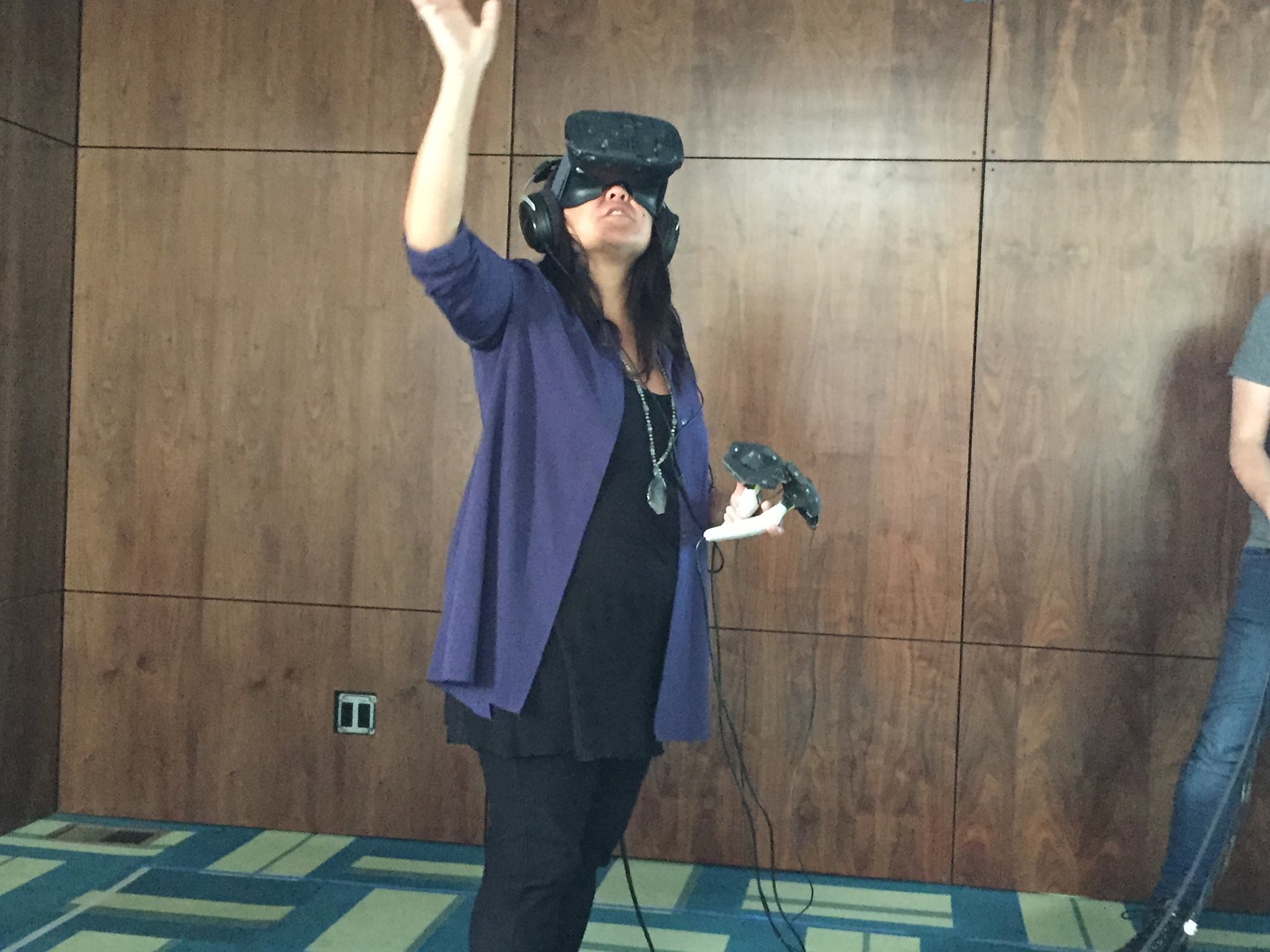Each year my colleague Simon Staffans from Helsinki provides a great service to the transmedia field with the publication of "One Year in Now Media" -- a compendium of his own great blog posts as well as interviews with people in the field, myself included.
Here are Simon's interview questions:
o How was 2013 for you? You launched Theatrics – how’s it done? Why did you decide to launch that venture? And what projects – other than Theatrics ones J - have you been the most impressed by?
o Back in the days, along the times of the first wrap-up I did, you said that there had been no transmedia projects to move you to tears yet. Has that happened yet? If not, why not? And do you see signs that it might come to happen? In what direction do you feel the multiplatform / transmedia world is moving?
o What are your hopes and fears for 2014? What possibilities and challenges do you see on the horizon?
And my replies:
2013 was a great year for me. My focus has been work with start-ups in the digital media/technology ecosystem. Some examples:
I am Senior Advisor to ideaBOOST, a new accelerator for start-ups in the media/tech field, created and launched by the Canadian Film Centre in Toronto. We completed and launched two cohorts -- more than a dozen companies including game platforms, transmedia properties, mobile apps, story-based e-commerce, and much more. We launched cohort #3 in late November, as well as a unique Production Lab in conjunction with wearable computing pioneer, Mind Pirate, a company that I advise. This Lab will incubate as many as five new products that run on Google Glass, as well as iOS and Android in 1st quarter of 2014. I’ve just gotten my own Google Glass device, and I’m very jazzed about this new form factor for experience delivery.
I'm also mentoring companies in another accelerator called Dogfish, based in New York City, with a focus on content creation startups. This accelerator from within the independent film community, and like ideaBOOST, believes that the principles of the "lean startup movement" can and should be used by content creators in order to develop sustainable business models for the digital era. One of the companies I advised is building a live-action game engine/platform, for example. Very interesting.
I also continued my work with Theatrics.com, a collaborative media platform based in Houston. The company grew out of a unique interactive sci-fi soap opera called "Beckinfield" in which users created and performed as characters in the story. I loved that idea and felt that I could help the company introduce this form of deep fan engagement to the television industry. To that end, Theatrics helped power The Social Sector, a digital native story-driven "mystery" that invited fans into the story world of the characters from USA's hit series PSYCH, which ran for 8 weeks in Q1, and is still live.
In April we expanded the idea by offering the beta version of the Theatrics platform aimed at independent transmedia producers who want to offer fan-based content in a story container. Our first example was "Welcome to Sanditon," the sequel to the Emmy-winning "The Lizzie Bennet Diaries," which modernized Jane Austen. In Sanditon, fans could impact the story through their own character engagements uploaded as video, text or images. Other outstanding examples included The Ghost Club and Aurelia: Edge of Darkness. The latter, a steampunk adventure, struck a chord with Live-Action Role-players (LARPers). The beta test continues -- anyone can create their own interactive show by using the wizard on Theatrics.com. The company is also building other applications in conjunction a range of online publishers and enterprises.
Theatrics is but one example of the rise of what I'm calling "Fan Powered Media." I gave several talks focusing on the idea of audience as engagement engine with content, including this presentation at the Broadband TV conference that used "The Walking Dead" as an example. Henry Jenkins and others have shown the way in recognizing that deep fan engagement, including content creation by users, is happening in both authorized and unauthorized ways. So a piece of commercial content is no longer just the linear artifact that attracts the fans -- it's really a vast ecosystem of fan engagement as well.
In terms of transmedia work this year, I focus on the independent projects, which are what interest me. I'm sure that companion apps for the latest Hollywood superhero movie were awesome, but this is not my terrain, except when forced to watch by friends or a long and boring plane ride.
Rather, I applaud the talents and especially the perseverance of my colleagues who have managed to devise and launch ambitious independent projects that hold the greatest chance of moving me like novels, films and great TV.
I was very moved and quite impressed with The Hollow, an interactive documentary about an impoverished county in Appalachia. The creators used the power of documentary storytelling, but layered the navigation of the experience with very beautiful graphics and a killer UI. I don't know any more what is "transmedia" and what isn't. I just know that intensity of feeling is the goal, and this work brought me there more than most. Elaine McMillion and her team found support from Tribeca, Kickstarter and elsewhere to support a long-term media commitment to a specific place where information can make a difference. What makes her effort distinctive is the authenticity of the content and the delight one has in navigating the site.
A similarly beautiful user-experience was achieved in National Geographic Channel's "Killing Kennedy" TV movie's companion website (Kennedy and Oswald) http://www.kennedyandoswald.com/#!/premiere-screen. Our web technologies allow such a rich mix of media types in a user-controlled environment. In this case, the emotions were less intense than a dramatic narrative, nostalgic and bittersweet, sort of like reading an old LIFE Magazine.
I saw a screening of the theatrical component of the much-awaited transmedia production “The Cosmonaut” which also included webisodes and other digital elements. At the time I reviewed it, the non-film components were just being released, and so I concentrated on the film itself, much of which I liked, though not entirely. I did very much like the premise of taking a historical milieu, in this case the world of Soviet-era cosmonauts, and creating a fictionalized world that unfurls in different media. There was a delicate, haunting quality to this work that was quite fine.
“The Institute,” is a 2013 film by Spencer McCall that documents the story of an alternate reality game held in San Francisco a few years ago in which some 10,000 people participated -- a hoax-based story world revolving around a kind of EST-like cult, the mystery of a missing girl, and a lot of real-world activities on the streets. While McCall can't replicate the experiences of those involved, we get a sense of the experience through interviews with many of those involved, including the creators, the participants (including a few who are mentally ill), and occasionally capturing scenes as they unfold. By the end, some viewers might themselves wonder what is “real” and what was manufactured for either the game or the film. I liked this because it reminded me that we don't really have any way to archive these time-limited experiments. Even those that are entirely digital may suddenly vanish with the fortunes of the companies housing the data.
On a slightly different note, I've been very impressed with the curatorial excellence of Google's Creative Sandbox. While much of the work is from agencies and brands, it's very nice to have a neutral location that enhances discovery with a different spin from the always useful FWA site (Favorite Website Awards). And in the transmedia/ARG area, I find Michael Anderson's ARGNet indispensable.
Year’s end affords an opportunity to reflect on where we are as a community. We saw the demise of the Story World conference and the launch of the Transvergence Summit, two conferences with some overlap and similar challenges -- an attempt to bring under one big tent a hydra-headed monster of a community which can't even seem to settle on a definition of what it does, and probably with good reason.
The nomenclature flame wars, to wit Brian Clark's recent Facebook post and the comments that followed, are tiresome. The essential issue being raised by many early transmedia practitioners has come and gone -- namely, that stories can unfold in many ways across a number of different platforms. Got it. Now what
We've seen multi-platform story experiments large and small from mainstream television and motion picture producers without much evidence that there is sustained interest there, other than to find inventive ways to promote and market the mother ship. Sometimes this stuff is great fun, especially with properties that already have fans.
A new artform? Not so much. Just take the meteoric rise and fall of so-called "second screen" apps, especially for TV, as an example. Marketers have done a lot of different implementations for many, many shows on a slew of emerging platforms, and I suspect will continue to do so, but the real winners at the end of the day are the all-purpose platforms Facebook and Twitter, which are easy for agencies to understand, and have massive scale. And can be measured, sort of. And therefore monetized.
So, I would expect experiments with the form to remain the province of independents who have different measures of success, though some financial return would be much appreciated, I'm sure. These folks want to invent something new, and perhaps along the way deliver a deeper experience to a smaller, but more intensely committed group of fans. Many of these folks will emerge from the transformed film and journalism programs at major universities, which, if you haven't noticed, are bursting at the seams (go figure!). We have a new generation of transmediologists coming up. I look forward to seeing their work.
 Wednesday, December 30, 2015 at 10:06 AM by
Wednesday, December 30, 2015 at 10:06 AM by  Nick DeMartino
Nick DeMartino  CFC's Ana Serrano at WEVR Studios, where our minds were blown by the HTC Vive and TheBlu: Experience.
CFC's Ana Serrano at WEVR Studios, where our minds were blown by the HTC Vive and TheBlu: Experience.


